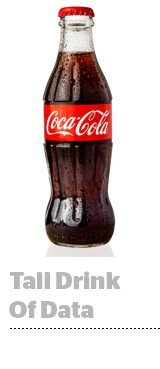[pullquote][/pullquote]Coca-Cola’s global senior digital director has a refreshing point of view on the divide between creative and media: There is no divide.
“Creative is media,” said Mariano Bosaz, whose job is to coordinate digital marketing efforts across markets and set the tone for Coke’s digital strategy.
Thinking of creative and media in silos harks back to when there were clear lines between content production and distribution across media channels, mainly television.
But digital isn’t a channel, as such. Bosaz’s role as digital director includes everything from hitting the showroom floor at Mobile World Congress in Barcelona to scoping new mobile technologies and thinking about how Coke can take advantage of artificial intelligence.
It’s possible for marketing to be a service – to be additive, Bosaz said.
“Instead of trying to push interruptive advertising content that people are not looking for while they’re online, things they usually try to skip or block, the opportunity is to develop content that people want to watch or engage with,” he said.
Data fuels these efforts.
He sees two types of data: the engagement and interaction data used to calculate ROI – the stuff that populates an analytics dashboard – and the more experiential data a brand can collect to “provide better services for the whole value chain,” which for Coke includes consumers, bottlers and retailers.
 But actually collecting the data is a challenge, he said. There needs to be a connection point between the brand and consumer that’s “fully fun and/or fully functional” and also makes sense and provides value to the user.
But actually collecting the data is a challenge, he said. There needs to be a connection point between the brand and consumer that’s “fully fun and/or fully functional” and also makes sense and provides value to the user.
The smart vending machines Coke deployed in Japan are a good example. The machines have beacons that enable users who download the Coke On app to pay by proximity and earn free drinks.
The beacons also enable Coke to collect a slew of data, including foot traffic around the vending machines and what drinks are purchased and when.
AdExchanger Daily
Get our editors’ roundup delivered to your inbox every weekday.
Daily Roundup
“That’s data we can leverage to improve the customer experience,” Bosaz said. “But first we need to systematize it. We need to find patterns, find the right insights, make it intelligent.”
Getting smart about data is part of Coca-Cola’s nascent, but growing, programmatic strategy.
“Programmatic buying is about intelligence and connections,” Bosaz said. “It’s about leveraging data and intelligence, or artificial intelligence, to disrupt the advertising industry or co-lead the disruption that is going to happen and can’t be stopped.”
 Coke first started thinking about programmatic roughly three years ago and began buying programmatically a year later. The brand works through agencies in several markets to execute its programmatic media plan.
Coke first started thinking about programmatic roughly three years ago and began buying programmatically a year later. The brand works through agencies in several markets to execute its programmatic media plan.
But two years in, programmatic still represents a small portion of its media buys. Coke is still in the learning phase, Bosaz said.
Although Bosaz is bullish, there are clear reasons for the reticence, including all the usual suspects: concerns about fraud, effectiveness and brand safety.
“There is still a gap between the promise and the results, and that means today we can’t only use programmatic to satisfy all of our connection points and needs,” he said. “But starting early gives us a lot of knowledge, and the learning curve is improving. However, we’re still waiting for programmatic to give us, how shall I say it, good news.”















